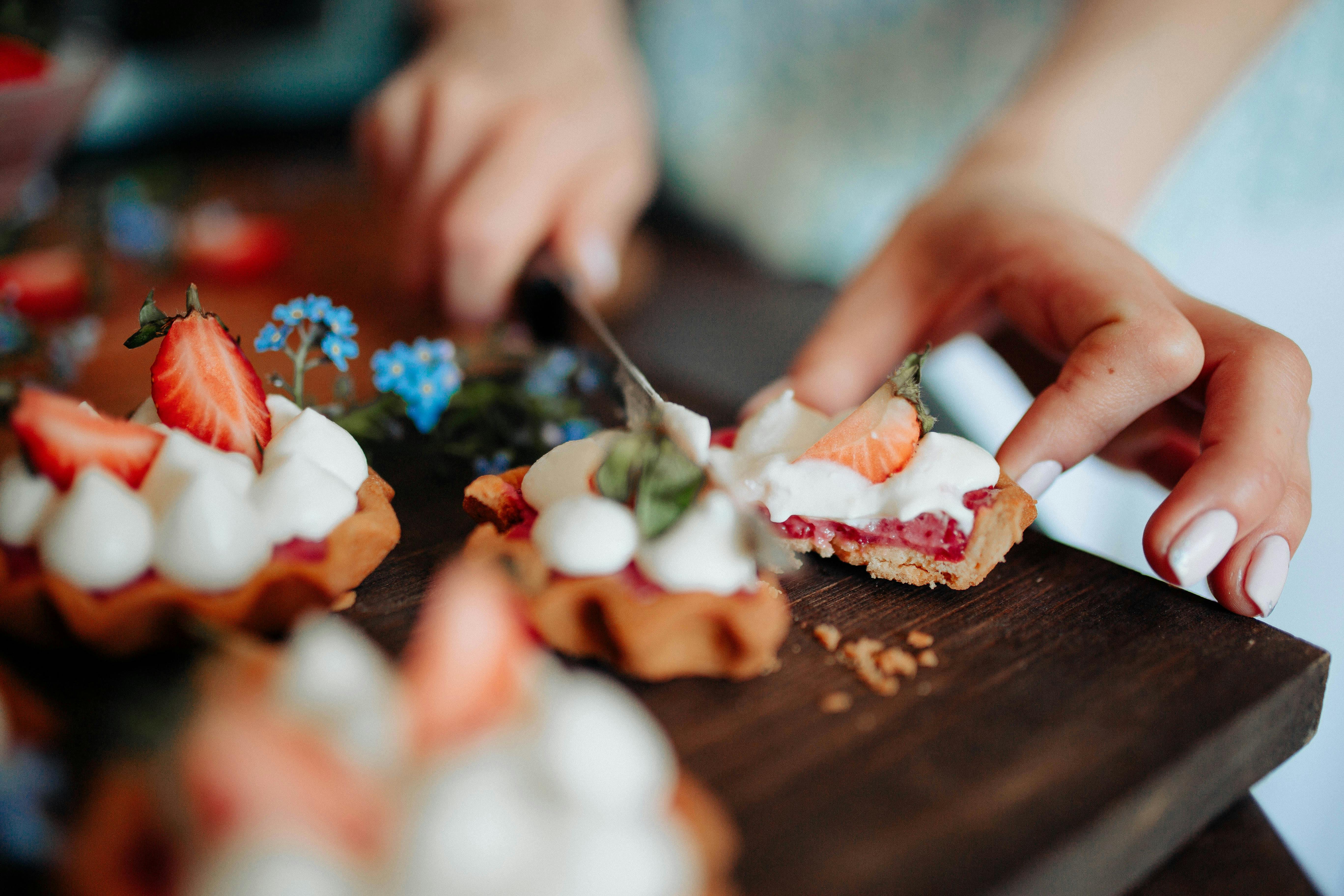Strawberry runners are an integral part of the strawberry-growing process. Runners are long, thin stems that develop from the parent strawberry plant and extend out from it. They produce new plants, which can be used to create a larger, more productive strawberry patch. But when is the best time to cut strawberry runners? This article will discuss the best time to cut strawberry runners and why it is important for successful berry production.The best time to cut strawberry runners is in the late summer or early fall when the plant is actively producing new leaves and shoots. This will ensure that the plant has plenty of energy and resources to focus on new growth, rather than trying to recover from root pruning.
How to Identify Strawberry Runners
Strawberry runners are a type of plant that produces long, thin stems from the base of the plant, called stolons. These stolons grow along the ground and can be identified by their white or pinkish color. They usually have small leaves and eventually form new plants at their tips. To identify strawberry runners, look for these characteristics:
• Look for long, thin stems creeping along the ground: Stolons are usually between 8-12 inches in length and have a white or pinkish color. They may also have small leaves.
• Check for new plants at the tips of the stolons: As strawberry runners grow, they form new plants at their tips. These new plants will look similar to regular strawberry plants, with green leaves and eventually flowers and fruit.
• Look for aerial roots on the stolons: The stolons of strawberry runners often have aerial roots growing along them. These are small roots that help anchor the plant to the soil as it grows along the ground.
• Inspect around your strawberry patch: Strawberry runners commonly emerge from existing strawberry plants in a patch. If you suspect you may have some growing around your patch, carefully inspect around the base of each plant to see if any stolons are emerging from them.
By keeping an eye out for these signs, you can quickly identify whether or not you have strawberry runners growing in your garden!
Preparing for Cutting Strawberry Runners
Preparing for cutting strawberry runners involves selecting the right tools and location for the job. The first step is to choose a pair of sharp, clean scissors or pruning shears. These should be sterilized before use, preferably with rubbing alcohol. It is also important to select a sunny, dry location for cutting runners. This will prevent disease and mold from taking hold on the cut surfaces.
The next step is to identify and assess the runner plants in the bed. Look for healthy, vigorous stems that are actively producing new leaves and flowers. It is important to avoid cutting runners from any plants that are weak or unhealthy, as these could introduce disease into the bed.
Once the ideal runner plants have been identified, it is time to begin cutting. Start by snipping off any dead or dried foliage along the runner stem below its point of origin on the parent plant. Then carefully cut down the length of the runner stem at least four inches from its origin point on both sides. This will give each side of the runner plenty of room to develop roots when transplanted into a fresh potting mix or soil bed.
Finally, place each cut section in an appropriate container filled with moistened potting mix or soil. Water lightly and keep in a warm location until roots begin to form before transplanting into their final growing area. With proper care and attention, these runners should quickly develop into healthy new strawberry plants!
Benefits of Cutting Strawberry Runners
Strawberry runners are a type of plant propagation, which involves the production of new plants from existing ones. They are an efficient and easy way to propagate strawberries in the garden. Cutting strawberry runners can provide a number of benefits to gardeners, including increased yields, improved disease resistance, and more vigorous plants.
One of the main benefits of cutting strawberry runners is that it allows for increased yields by increasing the number of plants in a given area. This can be done by having multiple runners per plant or by planting multiple runners along a row or bed. By doing this, gardeners will be able to get more fruit from their crop and maximize their yield potential.
Cutting strawberry runners also helps to improve disease resistance in the garden. By cutting off any diseased shoots that appear on the plant, gardeners can prevent the spread of disease organisms to other parts of their crops. This can help to protect their whole crop and ensure better yields in the future.
Finally, cutting strawberry runners can also lead to more vigorous plants with stronger root systems. As the runner is cut off from the mother plant, it is forced to produce its own root system from scratch, which leads to a much stronger root system than if it were left alone on the mother plant. This can result in healthier plants with better growth potential and increased yields over time.
In conclusion, cutting strawberry runners can provide many benefits for gardeners looking for an easy and efficient way to propagate strawberries in their gardens. Increased yields, improved disease resistance, and more vigorous plants are just some of these benefits that can be gained by taking this simple step when caring for your strawberry crop.
Tools Needed for Cutting Strawberry Runners
Cutting strawberry runners is an important part of growing strawberries in a garden. In order to do it properly, you will need the right tools. A sharp pair of garden scissors or pruning shears are the best tools for cutting runners. A spade can also be used to cut off any runners that have grown too far away from the main plant. You may also want to have some rooting hormone on hand, which helps the cuttings take root more easily when replanted. Finally, it is important to have a bucket or other container handy to put the cuttings in before replanting them.
By having the right tools on hand, you can make sure your strawberry cutting and replanting process goes as smoothly as possible.

Caring for Cut Strawberry Runners
Caring for strawberry runners after they are cut from the parent plant is essential for ensuring the health of the runner and its survival. When cutting strawberry runners, it is important to first inspect the runner and its leaves for any signs of disease or pests. If any are present, the runner should be discarded rather than propagated. Once a healthy runner is identified, it should be cut at least 6 inches from the parent plant using a sharp knife or scissors.
The cut runner should then be placed in a pot filled with damp potting soil and lightly covered, making sure that all parts of the runner are covered. The pot should be kept in an area with bright indirect sunlight and watered regularly but not overly saturated. Strawberry runners can take anywhere between 2-6 weeks to develop roots depending on environmental conditions such as temperature and humidity.
Once roots have begun to form, carefully remove the pot from the soil and inspect for root growth. If root growth is present, transplanting the newly rooted strawberry runner into a larger pot filled with fresh soil can begin. Once transplanted, water enough so that the soil is damp but not overly wet or dry. For best results, fertilize every two weeks with a balanced fertilizer specifically formulated for strawberries or other fruit-bearing plants such as blueberries or raspberries.
Finally, it is important to keep an eye out for any signs of disease or pests on newly rooted strawberry runners and treat as soon as possible if any arise. With proper care and attention, cut strawberry runners can quickly become healthy plants capable of bearing beautiful fruits!
Planting Cut Strawberry Runners
Planting cut strawberry runners is a great way to increase the strawberry patch or start a new one. The process involves taking a runner from an existing plant and planting it in another area of the garden. The runners are usually started in late summer and can take anywhere from three to six weeks to develop roots and then begin to grow. When planting cut strawberry runners, the soil should be worked up and tilled before planting. The best place to plant is in full sun, but they do well in partial shade as well. After planting, it’s important to water the area regularly so that the runners can take root and start producing berries.
For best results when planting cut strawberry runners, it’s important to give them enough space to spread out and reach their full potential. They should not be planted too close together, as this could lead to overcrowding and fewer berries being produced per plant. Also, it’s important not to let weeds grow around the plants since they will compete for nutrients and water with the strawberries themselves. Once planted, mulch should be applied around each runner to help keep moisture in the soil and prevent weed growth.
Strawberry runners are relatively easy to care for once established, but they do require regular pruning throughout the growing season. At least twice a year, prune away any dead leaves or stems that are no longer producing fruit; this will help encourage healthy growth of new foliage and blooms. Additionally, it’s essential that plants receive adequate amounts of water throughout the season; otherwise they may become stressed or produce fewer berries than expected. With proper care, cut strawberry runners can produce an abundant harvest of sweet juicy strawberries for many years!
Tips for Pruning and Cutting Strawberry Runners
Pruning and cutting strawberry runners is an important part of the annual maintenance of your strawberry bed. It’s important to remove runners that are crowding out other plants in the bed as well as those that are growing too far away from the main bed. Here are some tips to help you prune and cut back your strawberry runners:
1. Start pruning early in the season, before flowers appear on the runners. This will help control the spread of the plant and increase fruit production.
2. Cut off any runners that have grown more than 12 inches away from the main bed, as these will not be productive and can lead to overcrowding in other areas of the garden.
3. If you want to encourage more fruit production, remove any flowers that have already formed on new runner plants before they can set fruit.
4. Cut back any old or diseased foliage from existing plants, as this will help reduce pest and disease problems in your strawberry bed.
5. Be sure to keep all tools clean when pruning, as this will help prevent spread of disease among your plants.
By following these tips for pruning and cutting strawberry runners, you can ensure a healthy crop of strawberries each year!

Conclusion
Strawberry runners should be cut at the right time to ensure that the plant is healthy and productive. It is important to understand when to prune and what type of pruning will help the plant achieve its full potential. When pruning, it is best to remove only the excess runners and not all of them. It is also important to use sharp, clean tools when pruning, as this helps prevent disease and pests from entering the plant. Finally, it is important to regularly monitor the plants for signs of overgrowth or pest problems in order to maintain a healthy strawberry plant.
In conclusion, strawberry runners should be pruned properly in order to maximize production and overall health of the plant. Understanding when and how to prune will help ensure a productive harvest season. Lastly, regular monitoring of plants for signs of disease or pest problems can help maintain a healthy strawberry patch year-round.



